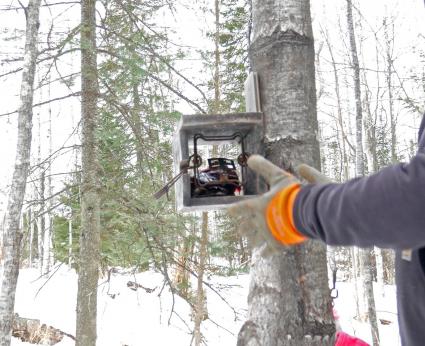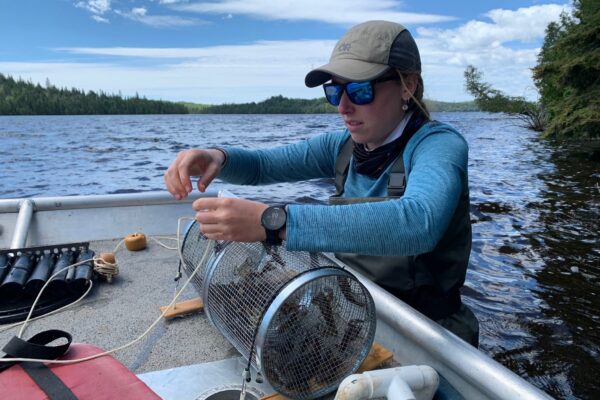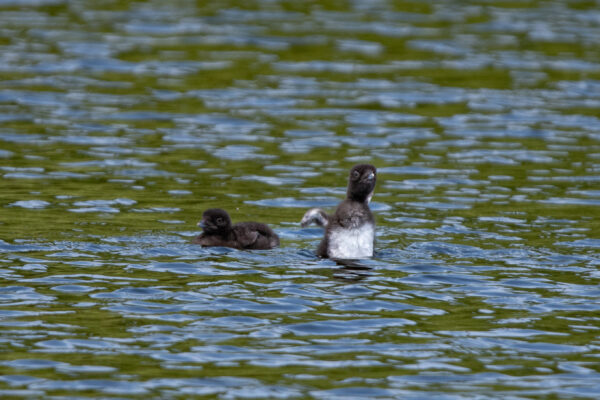Changes to trapping regulations in Minnesota aimed at protecting Canada lynx
Trappers across the Boundary Waters and Cook County will no longer be allowed to use certain types of snares following a federal ruling that directs the Minnesota Department of Natural Resources to increase trapping restrictions in this part of the state.
The changes are focused specifically on protecting Canada lynx, according to the conditions of a settlement between the Center for Biological Diversity and the DNR. The setting was completed Feb. 21 in a ruling from a federal judge.
The news is tied directly to a lawsuit that was filed in 2008 to protect lynx, a beloved and rare animal of Minnesota’s North Woods. Population estimates vary, but most wildlife officials claim there are no more than 200 of the cats living in Minnesota. Lynx are protected by the federal Endangered Species Act. Trapping or hunting lynx is not allowed in Minnesota. However, on rare occasions, lynx end up in traps and snares set for other animals. Even before the new restrictions take place, such incidents were rare. The DNR says that fewer than ten of the majestic cats have been accidently trapped in Minnesota during the past 15 years. By comparison, trappers are allowed to target bobcats, fishers, pine martens, and other fur-bearing animals across areas that include Superior National Forest and the Boundary Waters Canoe Area Wilderness. Moving forward, the new trapping regulations ban strangulation snares and certain leg-hold traps that are known to harm lynx.
The changes to the trapping regulations were opposed by the Minnesota Trappers Association. Cook County trapper Jimmy Wallner said the restrictions will make an impact on how local trappers are able to operate.
“This nearly eliminates snaring in the Lynx zone,” Wallner told WTIP. “In my opinion, it’s just a way for the animal rights and anti-trapping groups to use the Endangered Species Act to further their agenda.”
Furthermore, Wallner said vehicles, trains, and even bobcats pose greater threats to Canada lynx in Minnesota than the trapping industry does.
“I’ve been trapping since the mid-80s in Cook County and have run a lot of traps for a variety of animals and have never trapped a Lynx,” he said. “Nor do I know anyone who has.”
Meanwhile, the new regulations for trapping in northeastern Minnesota was celebrated by environmentalists and organizations that wanted to see more protection for lynx in and around the Boundary Waters region.
“We’re glad we were able to take take some of the pressure off lynx through these common sense trapping reforms,” said Collette Adkins, the carnivore conservation director and senior attorney at the Center for Biological Diversity.
And while the new restrictions may protect lynx in the forests of northeastern Minnesota, those cats that wander across the border into Canada have minimal protection. Trapping lynx in Canada, including along the border lakes shared with Minnesota, is legal.
“Lynx can be trapped in northwestern Ontario by trappers who have lynx quotas,” said Lauren Tonelli, the general manager Ontario Fur Managers Federation. “Lynx are not a threatened or endangered species in Ontario.”
Wallner said it’s possible that lynx considered part of the “Minnesota population” can easily find their way into Canada, including areas like the north side of Gunflint Lake, Rose Lake, Mountain Lake and down toward Lake Superior.
“Lynx are not in anymore danger here as they are across the border where they can be legally trapped by Canadian trappers,” he said.
Listen to the audio below to hear more details on this story, including an interview with the senior attorney for the Center for Biological Diversity.














